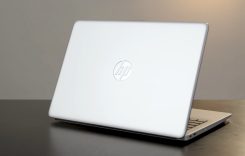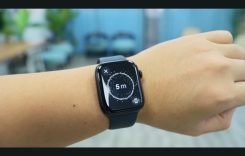In the ever-evolving landscape of technology, the decision to purchase a pre-owned laptop is becoming increasingly popular. As consumers seek to balance functionality with budget constraints, the second-hand laptop market provides a viable alternative. However, the journey to find the perfect pre-owned laptop requires careful consideration and a nuanced approach. This guide aims to shed light on the key factors and insights crucial to making a wise and satisfying purchase.
1. Determine Your Budget:

Setting a clear budget is the foundational step in the process of selecting a pre-owned laptop. Consider the maximum amount you are willing to spend, keeping in mind additional costs such as potential upgrades or accessories. By defining your budget, you narrow down the options available, making the decision-making process more manageable.
2. Identify Your Needs:

Understanding your specific needs and use cases is instrumental in choosing the right pre-owned laptop. Are you a professional requiring high processing power for intensive tasks, a student focused on portability, or a casual user with basic computing needs? Identifying your requirements will guide you toward laptops with features and specifications that align with your intended use.
3. Research Brands and Models:

Not all laptops are created equal, and certain brands and models have earned reputations for durability, performance, and longevity. Prioritize research on brands known for their build quality and reliability. Investigate reviews, user feedback, and expert opinions to gain insights into the strengths and weaknesses of various laptop models.
4. Assess the Physical Condition:
The physical condition of a pre-owned laptop is a critical factor in its overall value. Inspect the exterior for signs of wear, scratches, or dents. Check the display for dead pixels or other imperfections, and ensure that all ports and connectivity options are fully functional. A laptop in good physical condition is more likely to have been well-maintained by its previous owner.
5. Examine the Performance:
While assessing a pre-owned laptop, pay close attention to its performance capabilities. Check the specifications, including the processor, RAM, storage, and graphics card. Evaluate whether these specifications align with your intended use. Running benchmark tests can provide insights into the laptop’s processing speed and overall performance.
6. Verify the Battery Health:
Battery health is a crucial aspect of a laptop’s usability, especially for those who require portability. Inquire about the laptop’s battery health, which can often be checked through system settings. A well-maintained battery should still hold a significant charge capacity. If the battery health is compromised, factor in the potential cost of a replacement when evaluating the laptop’s overall value.
7. Check for Software Updates:
Regular software updates are essential for security, bug fixes, and access to new features. Verify whether the pre-owned laptop is running the latest operating system and is eligible for future updates. An outdated operating system may limit the laptop’s compatibility with certain applications and expose it to security vulnerabilities.
8. Purchase from Reputable Sellers:
Choosing a reputable seller is a pivotal decision in the pre-owned laptop buying process. Opt for certified refurbishers, well-established retailers, or individuals with positive reviews and transparent selling histories. Platforms that offer warranty options and provide details about the laptop’s history and any refurbishments inspire confidence in the purchase.
9. Negotiate the Price:
Don’t hesitate to negotiate the price when dealing with private sellers or smaller retailers. Research the market value of the specific laptop model you’re interested in and leverage that information during negotiations. A reasonable seller should be open to discussions about the price, and negotiating can potentially result in a more favorable deal.
10. Understand the Return Policy:
Lastly, be aware of the return policy offered by the seller. Even with thorough research, unforeseen issues may arise after the purchase. A clear and favorable return policy provides an additional layer of security, allowing you to return the laptop if it doesn’t meet your expectations.
In conclusion, navigating the pre-owned laptop market requires a blend of research, diligence, and a clear understanding of your specific needs. By defining your budget, assessing physical and performance factors, and purchasing from reputable sellers, you can find a pre-owned laptop that not only fits your financial constraints but also surpasses expectations in terms of functionality and reliability. Remember, a well-chosen pre-owned laptop can be a smart investment, providing a satisfying and cost-effective computing experience.









